Lizard Fish is a species of marine fish. It is commonly found in tropical and subtropical waters. It is a unique and recognizable fish with its elongated and cylindrical body, pointed head, and sharp teeth. Its coloration is typically light brown to grayish, with darker markings on its back and sides.
However, the lizard fish is more than just an interesting sight to behold. It is known as an opportunistic feeder. They also contribute to the health of marine ecosystems through their role as a predator of smaller fish and invertebrates.
Not only this, but lizard fish is also a part of Japanese cuisine. The Lizard Fish in Japan is a must-try if you enjoy seafood and crave something different. Let’s dive deep into a topic and explore more exciting facts about lizard fish.
About Lizard Fish – A Quick Biology
Here is a quick biology of Lizard fish in the ocean world:
| Parameters | Details |
| Scientific name | Synodus lucioceps |
| Kingdom | Animalia |
| Families | Synodontidae |
| Genus | Synodus Scopoli |
| Class | Actinopterygii |
| Phylum | Chordata |
| Order | Aulopiformes |
| Species | Synodus lucioceps |
| Habitat | Tropical, Subtropical water, Shallow water |
| Diet | Fish, Crabs, Shrimp and small invertebrates |
| Life Span | 7 to 9 years |
| Geographical range | Central-America, North-America, South-America |
| Weight | Up to 15 pounds |
| Size | 2 to 3 feet |
Some Amazing Facts about Lizard Fish
Here are some amazing facts about lizardfish:
- Lizard fish are known for their voracious appetite.
- Lizard fish have a unique method of reproduction. The females lay their eggs in open water and the young hatch and grow independently.
- They can uniquely blend in with their surroundings to avoid detection.
- The Bombay duck is not a duck but a type of lizard fish that inhabits the Indian coast. It is not fully understood how this fish acquired its name.
- They also have teeth on their tongue, which they use to grip and swallow their prey.
- The young lizard fish have such distinct physical characteristics from the mature ones that they were once believed to be separate species.
- They have 57 different species.
- Deep-sea lizardfish have been observed eating their own species if they come across them.
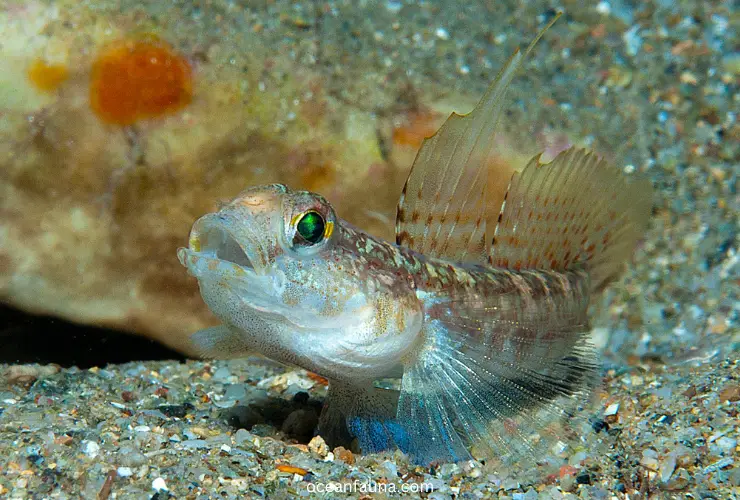
Description And Anatomy of Lizard Fish
The Synodontidae family is known for being benthic fish, meaning they primarily inhabit the ocean floor, where they fulfill their essential needs, such as food and reproduction.
The unique dentition of these fish sets them apart from other aquatic creatures and makes them easily identifiable. Lizard fish of this family are classified as teleost fish, largely due to their anatomical features conforming to this classification.
Lizard fish has approximately 60 to 63 vertebrae. They also have 8 to 26-gill membranes. These fish can grow up to 2 to 3 feet. A secondary adipose fin can be found near the lizard fish tail.
One of the unique characteristics of Lizardfish is their numerous sharp teeth, which are even located on their tongues. They have relatively large mouths compared to other fish families.
Their eyes are located at the end of their mouth, in contrast to other fish species, where the eyes are typically located at a distance from the mouth.
Physical Characteristics / Appearance of Lizard Fish
Lizard fish have a slender and cylindrical body shape. Their body coloration is a mix of white, gray and black.
They also have darker splotches on their heads that provide additional camouflage in sandy areas.
These rounded body-shaped fishes have a single dorsal fin located in the middle of their back. Yes, the dorsal fin is typically spin-like and often striped in black and white.
They also have a small adipose fin located closer to the tail. They have an average lifespan of around 7-9 years. Their heads resemble those of lizards, hence their name. The weight of lizard fish can be up to 2 pounds.
Behavior of Lizard Fish
Lizard fish have aggressive behavior. They are known as a fast swimmer. They are well-camouflaged. Also, they can bury themselves in the sand, exposing only their eyes while waiting for their prey to pass. They also remain on rocks while waiting for other fish species to move.
Habitat, Range, and Distribution of Lizard Fish
Lizard fish are found in tropical and subtropical waters around the globe. They live in open seas, lagoons and rivers. They can only descend to a depth of approximately 400 meters or 1300 feet. You will find them available in the Pacific, Atlantic, and Indian oceans.
Besides this, they are distributed to the Eastern Pacific region. They have also been reported in British Columbia and the Galapagos Islands. It’s worth noting that lizard fish are primarily a saltwater species. And they are commonly found in shallow, coastal waters. They are native to
- USA
- Canada
- Mexico
- Galapagos Islands
According to FAO, lizard fish (Synodus lucioceps) are native to the Pacific, Southeast, Northeast and Eastern Central. These marine creatures can also be found in the ecosystem of
- Gulf of Alaska
- Pacific Ocean
- California Current
- Gulf of California
- Peru-Galapagos Waters
Feeding Habits / Diet of Lizard Fish
Lizard fish are carnivorous. They consume a variety of marine creatures. Their diet comprises shrimp, crabs, mollusks, bony fish and cephalopods.
The lizard fish prey on various fish and small invertebrates. These fish often gather in large schools during specific seasons to ensure effective hunting. They are considered greedy and aggressive carnivores when feeding.
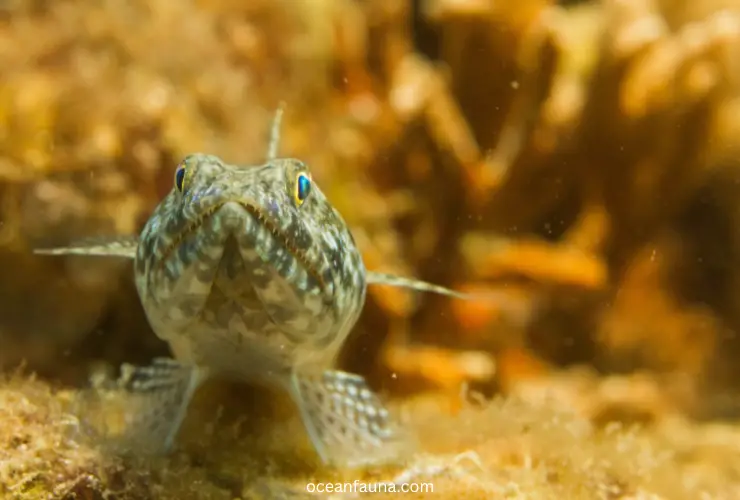
Life Cycle / Development of Lizard Fish
Lizard fish have a simple life cycle and development process consisting of four stages:
- Eggs: Female lizard fish lay their eggs in open water, where they are left to develop on their own. The eggs are small and transparent. They hatch after several days.
- Larvae: Once the eggs hatch, the lizard fish larvae emerge. They are tiny and have a yolk sac attached to their bellies, which provides them with nutrients. The larvae cannot swim properly and rely on ocean currents to move around.
- Juveniles: As the lizard fish larvae grow, they develop into juveniles. They start to look more like adult lizard fish and can swim more effectively. At this stage, they begin to feed on small fish and invertebrates.
- Adults: Lizardfish reach maturity at around 1-2 years of age. They can live up to 9 years. As adults, they continue to feed on small fish and invertebrates.
Reproduction System of Lizard Fish
Lizard fish are a type of fish with hermaphroditic characteristics. It means that they have both male and female reproductive tissue at the same time. However, they usually have separate sexes (dioecious). Fertilization takes place externally during the reproduction process.
They have a spawning season that occurs at different times throughout the year, but the highest during the summer. Females deposit their eggs and males fertilize them.
The gestation period for lizard fish is brief, typically lasting only a few days. After the pelagic larvae are born, they have a distinctive feature of black pigments that run along their intestine. These spots are retained internally within the intestine after settlement.
Although most species have distinct sexes, deep-sea lizard fish are hermaphrodites. This is an adaptation to their isolated deep-sea environment. It enables them to mate with any other deep-sea lizard fish they encounter, increasing their reproductive success.
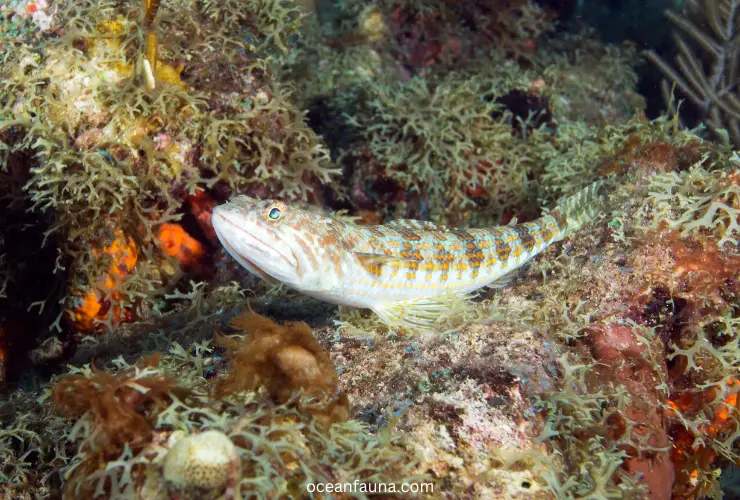
Importance of Lizard Fish in Ecosystem
Lizard fish play a crucial role in the ecosystem. As predators, they feed on small fish and invertebrates. That helps to control the populations of these organisms. This can help maintain a balance in the ecosystem and prevent certain species from overpopulating.
As prey, lizard fish are an important food source for larger predators. Their presence in the ecosystem contributes to the overall biodiversity of marine life.
Predators of Lizard Fish
Some of the main predators of Lizard fish include (in marine ecosystems):
- Shark
- Larger fish
- Billfish
- Tuna
- Sea Animals
- Sea Birds
Benefits of Lizard Fish for Humans
Lizard fish offer several benefits to humans. Here are a few of them:
Lizard fish are a good source of omega-3 fatty acids, which can reduce inflammation and improve brain and heart health.
These fish also contain a variety of vitamins and minerals. You will find vitamin D, vitamin B12, and selenium, that is important for overall health and well-being.
They are also used as bait for commercial fishing, which makes them important to the fishing industry.
Lizard fish are relatively low in fat. It contains only 3.3% fat. It makes them a healthy protein option for people trying to consume less fat.
Do Lizard Fish Sting?
No, lizard fish do not sting. They are not known to be venomous. Notably, they do have sharp teeth and can bite if provoked. But their bite is not considered dangerous to humans.
Is the Lizard Fish Poisonous?
No, the lizard fish is not poisonous. While their bites are not usually poisonous, they can be painful and cause injury or infection.
Can You Touch Lizard Fish?
Yes, you can touch lizard fish. As I mentioned above, they are not poisonous and dangerous to humans. But you have to be careful. Avoid touching its sharp teeth as they can cause injury. It’s advisable to touch or handle the fish gently and carefully.
Is Lizard Fish Healthy?
Yes, lizard fish is healthy. Lizard fish is considered nutritious, as it is a good source of protein and several essential vitamins and minerals. They are low in fat and calories but high in protein.
Fish protein is considered one of the most important protein sources among the various protein sources available. Researchers have studied and utilized many fish proteins to develop food products.
Did you know how much protein and calcium lizard fish have? The protein and calcium ratio found in this type of fish is as follows: a) Protein ratio: 70% and b) Calcium: 1500–2500 mg/100 g.
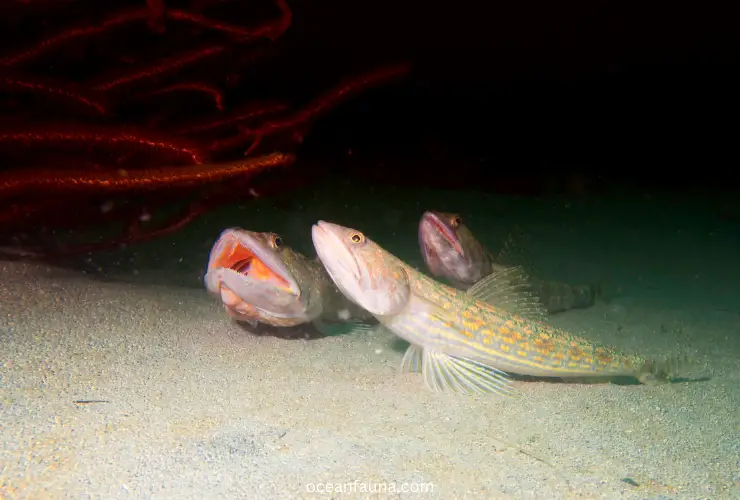
FAQs
Are they endangered species?
According to the study by the IUCN Red List of endangered species, the majority of these fish species are thought to as threatened. They are counted to be of the least concern to becoming an endangered species. The IUCN Red List considers that Atlantic lizardfish are under extinction.
What is the local name of lizard fish?
The lizardfish’s local name is Sauries and Bombay ducks. The inshore lizardfish is referred to by various names, including galliwasp, sand pike and agarto.
Is a lizardfish a lizard or a fish?
Lizard fish is a fish, not a lizard. Due to its head resemblance to a lizard, it is known as lizard fish.
Conclusion
In the deep sea, there are many creatures, some dangerous and some not. Among them, the lizard fish is one of the most notorious predators in the world. These bottom-dwelling predators will eat almost anything that crosses their path.
Lizard fish come in various sizes, but their teeth and large mouth typically recognize them.
Lizard Fish is an interesting marine fish species that is easily recognizable due to its unique physical features. Apart from being a part of Japanese cuisine, this fish also plays a crucial role in maintaining the health of marine ecosystems.

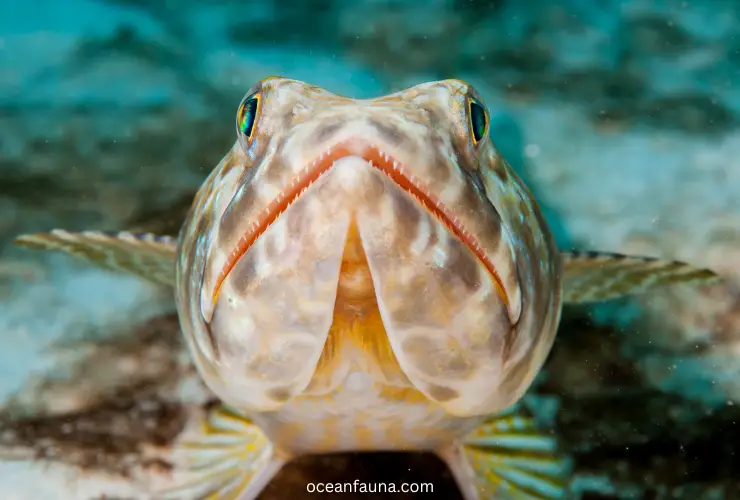
1 thought on “Lizard Fish: Habitat, Diet, Description & Facts”